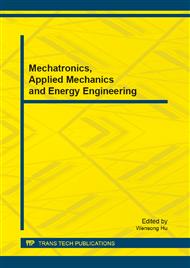p.179
p.185
p.195
p.201
p.205
p.211
p.217
p.222
p.228
Development and Implementation of a Method for Chatter Control in Turning Applying Magnet from below the Tool
Abstract:
Chatter is a self-excited and violent form of vibration which is almost unavoidable in all machining processes. It affects surface roughness, machining accuracy, cutting tool and machine tool life, metal removal rate; and consequently operation cost. This research work focuses on investigation of the influence of the cutting parameters on chatter and implementation of a method based on application of permanent magnet for controlling chatter during turning of stainless steel AISI 304 using coated carbide tool. For this purpose, a powerful permanent bar magnet (of strength 1250-1350 Gauss) was placed inside a specially developed fixture mounted on the lathe machine carriage, to apply magnetic field to the base of the tool holder in the Z direction. The effectiveness of the application of the magnet on chatter suppression was measured in terms of reduction of amplitude of chatter compared to conventional turning. To achieve this, a small central composite design (CCD) of the Response Surface Methodology (RSM) with five levels and an alpha value of 1.4142, was used in the design of the experiments (DoE). Design-Expert 6.0 software was utilized in the model development process. Vibration monitoring was done using an online vibration monitoring system. FFT analysis of the recorded vibration signals was conducted using DASYLab software to evaluate the peak chatter amplitudes and their corresponding excited frequencies. The acceleration amplitude was found to be reduced by a maximum of 73.43% and an average of 31.58% due to the effect of damping on the resonant amplitude offered by the magnetic field created by the permanent magnet.
Info:
Periodical:
Pages:
205-210
Citation:
Online since:
September 2013
Keywords:
Price:
Сopyright:
© 2013 Trans Tech Publications Ltd. All Rights Reserved
Share:
Citation:


